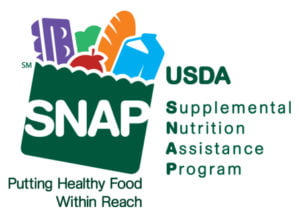
Lift SNAP’s Asset Test and People Save
When a low-wage worker has a dental emergency or the car breaks down, it can set off a chain reaction of financial problems. Losing a job due to that car problem is a catastrophe. It’s not an exaggeration to say that having just a little money in a bank account is a lifesaver.
But low-income Americans are discouraged from saving due to the asset limits in joint federal-state assistance programs such as food stamps, Medicaid, and Temporary Assistance to Needy Families. These asset limits create a Catch-22: if the recipient builds up the savings crucial to their financial well-being, they lose their assistance, which is also critical to their well-being.
This illustrates just how difficult it is to design programs to help the poor and low-wage workers. Without asset limits, a relatively well-off person who earns very little would qualify for food stamps. But using asset limits to restrict who qualifies can harm our most financially fragile populations.
 New research looking into the impact of asset limits among recipients under the Supplemental Nutrition Assistance Program (SNAP) – once known as food stamps – confirms that asset limits inhibit saving.
New research looking into the impact of asset limits among recipients under the Supplemental Nutrition Assistance Program (SNAP) – once known as food stamps – confirms that asset limits inhibit saving.
“Having a policy where people don’t save or draw down their assets before they apply for benefits can really harm long-term economic success for these families,” said Caroline Ratcliffe, a senior fellow at the Urban Institute who conducted the study.
Ratcliffe and fellow researchers took advantage of decisions by most states to eliminate or loosen their asset limits for SNAP benefits: by 2012, 36 states had eliminated them and four states had increased their dollar limits. Later, a few states changed these policies, including Louisiana, which reinstated the federal limit of $2,250 for a low-income household and $3,250 for an elderly low-income household. Homes, retirement plans and refunds through the Earned Income Tax Credit are not counted in the asset limits.
Only about half of all households enrolled in SNAP have bank accounts, with the typical balance at around $150. But living in a state that eased the limit increased the likelihood that SNAP households have an account, the study found.
SNAP asset limits also impact the amount saved. For example, the study showed that people with incomes at two times the federal poverty limit were more likely to have a bank account with at least a $500 balance after their state lifted its restrictions.
Further, raising the asset limits reduced the number of people churning into, out of, and back into the SNAP program. Reducing churn should also reduce the cost of managing assistance programs.
So eliminating or increasing SNAP asset limits isn’t just good for beneficiaries who’d like to save a little money but also for SNAP administrators.
To stay current on our Squared Away blog, we invite you to join our free email list. You’ll receive just one email each week – with links to the two new posts for that week – when you sign up here.






